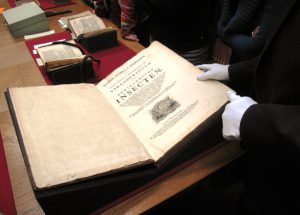When talking about scientists, people often think of Leonardo da Vinci, Isaac Newton, Nikola Tesla, Thomas Edisson, Albert Einstein and so on and so forth. The problem with this is that all of these scientists are male. There are plenty of great female scientists like Marie Curie, Barbara McClintok, Ada Lovelace, Grace Hopper, Rosalind Franklin and so many more. So how come history often remembers males instead of females, even when talking about scientists?
Well, the roots of that are in patriarchy. There have been plenty of issues regarding patriarchy and science and they have been present throughout history. Here are some examples, distant and recent.

Maria Merian – 17th Century
The most frequent problem during history was that certain scientific discoveries made by women were attributed to men. This is almost like the ultimate insult to the women who worked for hours and days, trying their best to make our world better. Maria Merian was born in 1647 and studied insects. She was an entomologist. She studied metamorphosis but her findings were largely dismissed due to her texts being in German rather than Latin, which was considered to be the language of science at the time. It wasn’t until years later that the public acknowledged her for the discoveries that she had made.
Mary Anning – 18th Century
Born in late 1799, Mary Anning was a paleontologist, or fossil hunter. Even early on, at the age of 12, she was already moving the world. Her discoveries of fossils, namely that of the ichthyosaur and plesiosaur, influenced a lot of people to start thinking about evolution. You know who wrote of evolution, Charles Darwin? Yes, her work helped shape science directly, but being a female, she was never allowed to pursue a career in science and was never consulted about any matters paleontologic, nor did she ever join the Geological Society of London. It took a century for her work to be acknowledged.

Nettie Maria Stevens – 19th Century
Stevens was a geneticist and one who discovered that there were large and small chromosomes, namely XX and XY in beetles. This corresponds with how human chromosomes work. Given that she was a female, a male scientist of that time, Edmund Wilson, who got to the same conclusions, got all the glory while Nettie was discriminated.
Rosalind Franklin – 20th Century
Rosalind Franklin was a molecular biologist and chemist. She is best known for her research on the DNA, resulting in the famous Photo 51, which was shared without her consent with scientists Francis Crick and James Watson. Both of them won a Nobel Prize in 1962, while Franklin was already dead in 1958, due to ovarian cancer. Her friend and fellow researcher Aaron Klug won a Nobel Prize in 1982 and it is speculated that she would have most likely won the same prize with Klug, had she been alive.
These have been some cases of female discrimination through history, of female scientists, specifically. These issues persist to this day, but are much less frequent.

